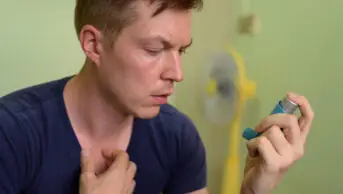In a portfolio career pharmacists take on a variety of roles. I did not jump into mine. I was pushed into it, when made redundant by an NHS hospital in 1994. The chief executive told me my job had gone. I felt as though the sky had fallen in and vowed never again to work as an employee.That way I could not
be made redundant again.
However, I decided to treat redundancy as an opportunity to expand my repertoire of skills. I had three potential strands of work: community locum, industrial qualified person and communicator.
The immediate challenge was to earn money quickly because my outgoings were substantial, so I
started to do locums at about 25 sites, including health centres, multiples, sole proprietors and supermarkets. I was grateful for the support I received from experienced community pharmacists (including my wife) while I learnt the job and adjusted to not being the boss. I had seldom dispensed during the previous 20 years. Most pharmacists have experience of community practice and it was a privilege to be trusted by the public in a role where I was able to help people with problems.
Qualified person role
The second component of my career was as an industrial Qualified Person (QP).A former colleague, who was an NHS quality assurance pharmacist, pointed out that I was on the list of pharmacists eligible for nomination as EU QPs and that this was a potential source of income. I was on the list because I had documented experience in industry and hospitals. A gargantuan marketing effort followed.
Eventually, a regulatory affairs consultant telephoned, and asked if I would be willing to work in the US. The role related to collagen implants for urinary incontinence and cosmetic surgery. My role was to quality assure and certify the test doses and implants made by industry and to ensure the products complied with legal requirements. More work followed as a QP in the manufacture of medicines, ensuring that they were produced according to good manufacturing practice standards. One factory where I worked made various different gases used in patient care. The gases were often stored in huge cylinders. My role was to ensure they were made correctly and complied with the legal specifications, including labelling with the appropriate batch numbers.
Since 2004, some QPs (such as I) have covered investigational medicinal product manufacture. I have been involved with all phases of clinical trials, some involving genetic engineering.
As a QP,I have certified medicines for a range of animals, including an ectoparasiticide for
sea lice infestations in Atlantic salmon. My QP status was was pertinent in both the development and manufacture of the product, which eventually went into medicated feed to fulfil veterinary surgeons’ signed orders. A lorry transported sacks of feed to fish farms in Scottish lochs, where administration was sometimes by dumper truck. My role included certifying the approval for release on to the market of batches of the product.
I have conducted quality audits in many countries, including Belgium, Germany, Italy, Switzerland and the US. Companies generally use my consultancy to release batches and to help prepare for the Medicines and Healthcare products Regulatory Agency or for the US Food and Drug Administration
inspections. Many MHRA inspectors are eligible to be nominated as QPs.
The third component of my career has been in training. I have gone into some companies to train staff how to sell medicines to the NHS, by capitalising upon NHS culture. This work had its lighter side: one black-tie corporate event offered a “midnight murder mystery” performance and strawberries, cream and champagne. But such facilitation was of limited life; I became out of date.
However, I continued to develop training to ensure staff met the requirements of good manufacturing practice. I also trained residential home staff on the safe use of medicines and GP registrars about community pharmacy.
I wrote abstracts for Pharmline and, as an ex-preregistration tutor, I belong to the panel of question
writers for the registration examinations for future pharmacists.
While I worked as a community locum, I kept detailed field notes and used the primary data for a PhD in sociology, which challenged me intellectually and emotionally.
My supervisors set out to challenge my previous way of thinking. They succeeded.
Doctorate
I was awarded my doctorate, for what was probably the first “proper” ethnography of British community pharmacists.Then I published more commentary, concentrating on sociological interpretations of the pharmaceutical scene. One PJ article I wrote — “To take or not to take” — was studied online in the Netherlands (PJ, 20 October 2001, p562–3), and resulted in an invitation to be the keynote speaker at a multinational, multidisciplinary conference at The Hague.
Subsequently, I published a novel, ‘Drugs and desire’, which was set in the world of pharmacy. I did the usual round of book signings and was interviewed on a local BBC chat show. That provided an opportunity to promote pharmacy, generating more positive publicity than the whole of my employed career, which had included work on committees, participation in employment fairs and disposal of unwanted medicines campaigns.
Modern technology makes portfolio practice a viable option. Flexibility, networking, organisation, self-reliance — and an accountant — also help.
Malcolm Brown
1994 to date portfolio career, including PhD (University of East Anglia)
1977–94 Director of pharmacy and civil emergency planning/district pharmaceutical officer and adviser at Great Yarmouth and Waveney and James Paget Hospital. BA (Open); MPhil (Bradford)
1968–77 Hospital pharmacist: senior, deputy chief and principal, including work at Liverpool, Stockport, Harrogate and Humberside and industrial production manager at Wellcome Foundation, Crewe (now GlaxoSmithKline)


